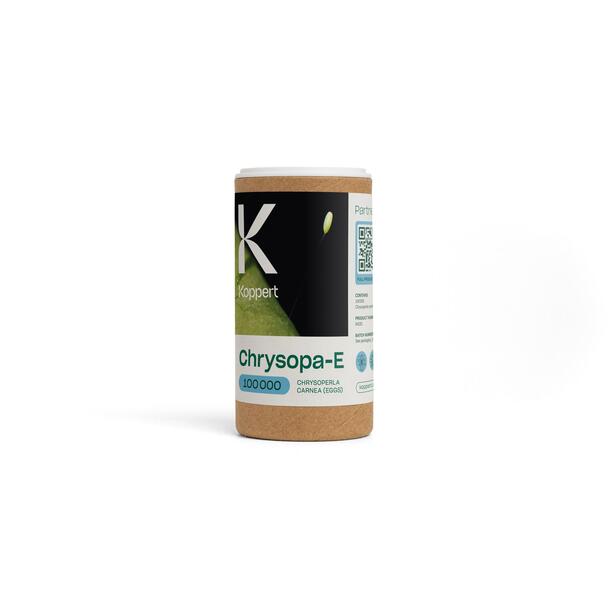Use for
Pests
Aphids and other pests, like mealybugs, Echinothrips and butterfly and moth eggs.
How it works
Mode of action
Larvae of the lacewing attack their prey and suck their body fluids.
Visual effect
Prey is sucked out, shrivelled skins are difficult to find. Chrysoperla carnea larvae are active mainly during the night. The larvae hide during the day.
Product specifications
| Pack size | 100,000 eggs. |
| Presentation | 90 ml cardboard tube. |
| Carrier | None. |
Directions for use
Application
- Apply evenly on leaves
- Avoid clusters of eggs
- Can be applied with Air(o)bug only when mixed with (other products) with carrier material
Dosage
The dosage of Chrysopa-E depends on climate, crop and pest density and should always be adjusted to the particular situation. Introduction rates typically range from 10-100 eggs per m2/release. Releases should be made preventively or in infested areas and repeated at weekly intervals until control is achieved. Consult a Koppert advisor or a recognized distributor of Koppert products for advice on the best strategy for your situation.
Environmental conditions
Chrysoperla carnea is effective in a wide temperature range including low temperatures (average > 12°C/54°F). It is most effective at 20-28°C (68-82°F).
Combined use
Can be used in combination with other aphid biocontrol agents.
Side effects
Pesticides can have (in)direct effects on biological solutions. Find out which pesticides have side effects on this product.
Product handling
Storage time after receipt
1-2 days.
Storage temperature
8-10°C/47-50°F.
Storage conditions
In the dark.
"The general conditions of Koppert (Koppert B.V. and/or of its affiliated companies) apply. Only use products that are permitted in your country/state and crop. Always comply with the conditions specified in local product registrations. Koppert cannot be held liable for unauthorized use. Koppert is not liable for any loss of quality if the product is stored for longer than recommended and/or under incorrect conditions."
